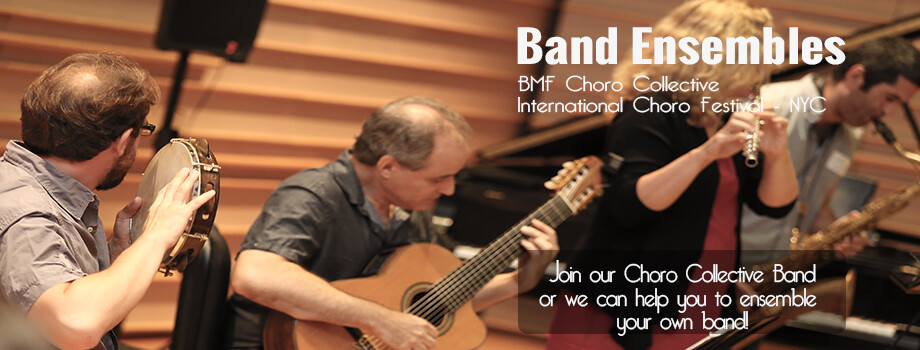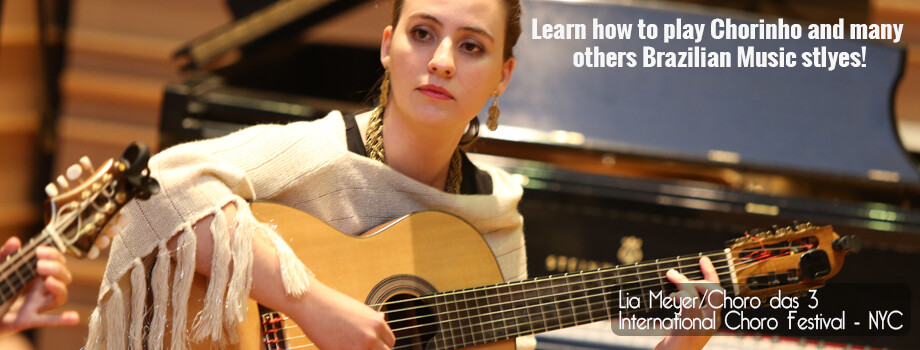There are several different instruments used to make beautiful music, but these are some of the most opular or well-known Brazilian musical instruments used in dances, religious ceremonies, and just for simple enjoyment
|
 Bossa Nova is a well-known style of Brazilian music developed and popularizedin the 1950s and 1960s.The phrase bossa nova means literally “New Trend” A lyrical fusion of samba and jazz, bossa nova acquired a large following in the 1960s initially from young musicians and college students. Since its birth, it remains a vital part of the standard jazz repertoire. Bossa Nova is a well-known style of Brazilian music developed and popularizedin the 1950s and 1960s.The phrase bossa nova means literally “New Trend” A lyrical fusion of samba and jazz, bossa nova acquired a large following in the 1960s initially from young musicians and college students. Since its birth, it remains a vital part of the standard jazz repertoire.
|
 Brazilian Pop Music or MPB is a trend in post-Bossa Nova urban popular music. It is not a distinct genre but rather a combination of original songwriting and updated versions of traditional Brazilian urban music styles like samba and samba-canção with contemporary influences, like folk, rock, pop and jazz. Brazilian Pop Music or MPB is a trend in post-Bossa Nova urban popular music. It is not a distinct genre but rather a combination of original songwriting and updated versions of traditional Brazilian urban music styles like samba and samba-canção with contemporary influences, like folk, rock, pop and jazz.
|
 Samba is a Brazilian dance and musical genre originating in Bahia and with its roots in Brazil (Rio De Janeiro) and Africa via the West African slave trade and African religious traditions. It is recognized around the world as a symbol of Brazil and the Brazilian Carnival. Considered one of the most popular Brazilian cultural expressions, samba has become an icon of Brazilian national identity. Samba is a Brazilian dance and musical genre originating in Bahia and with its roots in Brazil (Rio De Janeiro) and Africa via the West African slave trade and African religious traditions. It is recognized around the world as a symbol of Brazil and the Brazilian Carnival. Considered one of the most popular Brazilian cultural expressions, samba has become an icon of Brazilian national identity.
|
Samba Rock is a style of music that was born in Brazil in the 1960′s. It combines the sounds of samba, soul, bebop and jazz. It’s a genre of samba and sub genre of rock and most importantly: it will keep you moving all night long! The pioneers of the style are Jorge Ben Jor, Bebeto, Banda Black Rio, Tim Maia and Trio Mocotó. Today names such as Clube do Balanço, Sambasonics, Seu Jorge among others keep everyone dancing to the groove!
|
 Brazilian Rock is the musical style known in Brazil as “Brazilian rock n’ roll” dates back to a Portuguese-version cover of “Rock Around the Clock” in 1954. In the 1960s, young singers like Roberto Carlos and the Jovem Guarda movement were very popular. The 60s also saw the rise of bands such as the “tropicalistas” Os Mutantes and the experimental (mixing progressive rock, jazz and Música Popular Brasileira) O Som Imaginário. Brazilian Rock is the musical style known in Brazil as “Brazilian rock n’ roll” dates back to a Portuguese-version cover of “Rock Around the Clock” in 1954. In the 1960s, young singers like Roberto Carlos and the Jovem Guarda movement were very popular. The 60s also saw the rise of bands such as the “tropicalistas” Os Mutantes and the experimental (mixing progressive rock, jazz and Música Popular Brasileira) O Som Imaginário.
|
 Brazilian folk/folk-rock is the new Brazilian folk scene is not to be mistaken with folkloric Brazilian music. In recent years mainstream Brazilian artists have emerged playing a blend of classic Americana artists such as Bob Dylan and Johnny Cash alongside clear influences by Brazilian troubadours such as Chico Buarque and Caetano Veloso. The first to break into the mainstream was internet phenomenon Mallu Magalhães, who played covers of her favourite artists in English and her own songs in both English and Portuguese (as well as other languages). Brazilian folk/folk-rock is the new Brazilian folk scene is not to be mistaken with folkloric Brazilian music. In recent years mainstream Brazilian artists have emerged playing a blend of classic Americana artists such as Bob Dylan and Johnny Cash alongside clear influences by Brazilian troubadours such as Chico Buarque and Caetano Veloso. The first to break into the mainstream was internet phenomenon Mallu Magalhães, who played covers of her favourite artists in English and her own songs in both English and Portuguese (as well as other languages).
|
 Forro encompasses a number of Northeastern Brazilian dances as well as a number of different musical genres which accompany these dances. Although the music has gained widespread popularity in all of Brazil and is growing in popularity outside Brazil, the event most closely associated with Forró is the annual Festa Junina (June Festival), a part of Brazilian traditional culture which celebrates a number of Catholic saints. The most celebrated day of the festival is the day of São João. Forro encompasses a number of Northeastern Brazilian dances as well as a number of different musical genres which accompany these dances. Although the music has gained widespread popularity in all of Brazil and is growing in popularity outside Brazil, the event most closely associated with Forró is the annual Festa Junina (June Festival), a part of Brazilian traditional culture which celebrates a number of Catholic saints. The most celebrated day of the festival is the day of São João.
|
 Choro or Chorinho (literally “cry” in Portuguese, but in context a more appropriate translation would be “lament”), traditionally called chorinho (“little cry” or “little lament”). Instrumental, its origins are in 19th century Rio de Janeiro. Originally choro was played by a trio of flute, guitar and cavaquinho (a small chordophone with four strings). Choro or Chorinho (literally “cry” in Portuguese, but in context a more appropriate translation would be “lament”), traditionally called chorinho (“little cry” or “little lament”). Instrumental, its origins are in 19th century Rio de Janeiro. Originally choro was played by a trio of flute, guitar and cavaquinho (a small chordophone with four strings).
|
 Capoeira Music is the Afro -Brazilian sport of capoeira is never played without its own music, which is usually considered to be a call-and-response type of folk music. The main instruments of capoeira music include the berimbau, the atabaque and the pandeiro. Capoeira songs may be improvised on the spot, or they may be popular songs written by older, and ancient mestres (teachers), and often include accounts of the history of capoeira, or the doings of great mestres. Capoeira Music is the Afro -Brazilian sport of capoeira is never played without its own music, which is usually considered to be a call-and-response type of folk music. The main instruments of capoeira music include the berimbau, the atabaque and the pandeiro. Capoeira songs may be improvised on the spot, or they may be popular songs written by older, and ancient mestres (teachers), and often include accounts of the history of capoeira, or the doings of great mestres.
|
Other Forms It would take a book to describe the plethora of musical styles available in Brazil today.Tropicalia, musica nordestina, repentismo, frevo, baiao, maracatu, batuque, maxixe, moda de viola, bumba-meu-boi, lundu,and maxixeand, afoxe are just some of the other popular musical styles that abound in a country that loves to sing and dance..
Click here to continue
|















